The chronograph is a unique type of watch that combines both form and function, beauty and utility, style and substance, many chronographs, clock, timer, and tachymeter.
Its name, chronograph, comes from the Greek words ‘chronos’ (time) and ‘graphein’ (to write), although it doesn’t write time but records or measures it.
This dual functionality allows the chronograph to serve as a timepiece, clock, and stopwatch with a timer, tachymeter, and seconds hand.
The most common and straightforward version is the simple chronograph, also known as the standard chronograph timer.
It typically includes a start/stop pusher, a reset pusher, sub-dials to track elapsed minutes and hours, and a button.
With the simple chronograph, users can accurately measure the time passed by starting, stopping, and resetting the central chronograph seconds hand using the button.
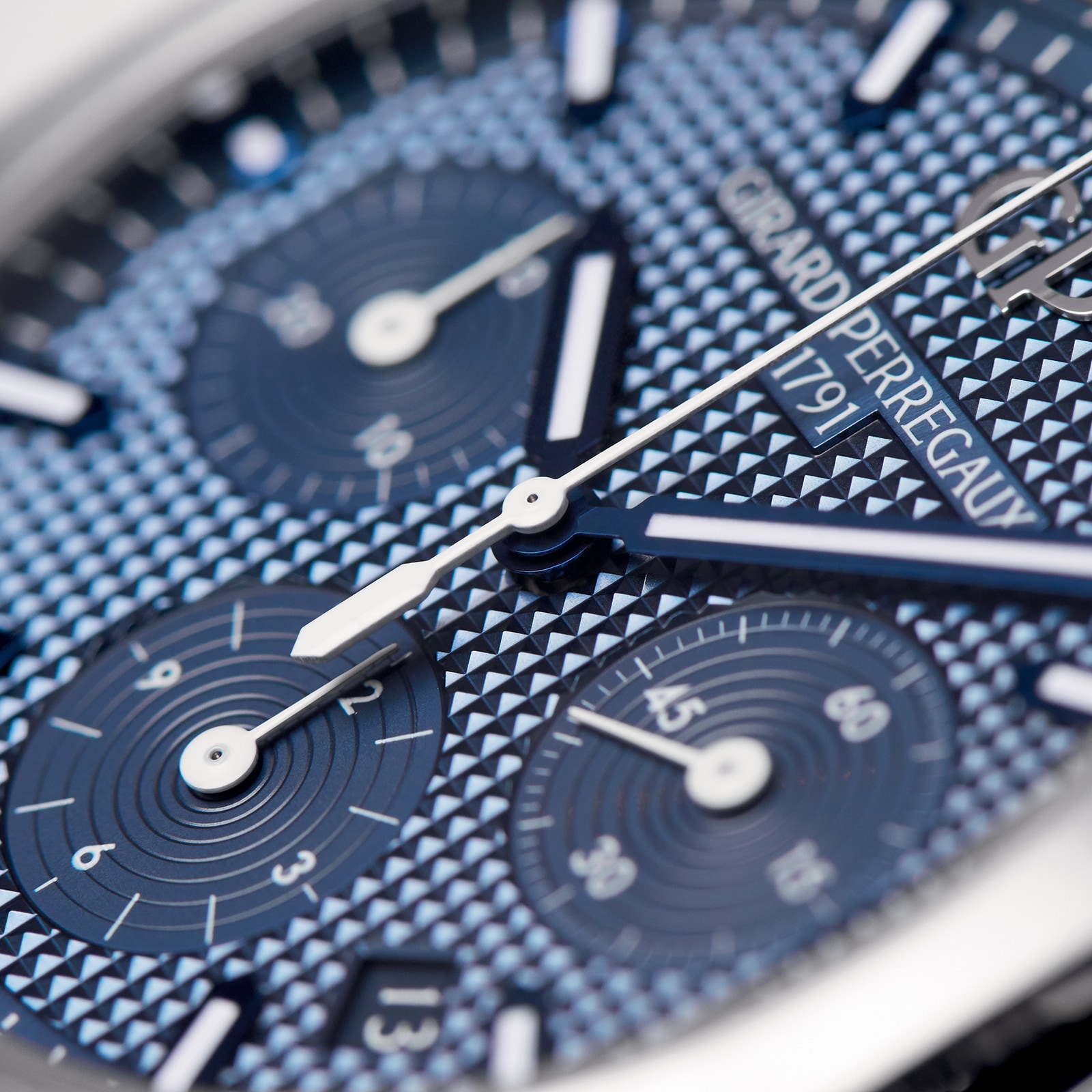
The Chronograph: A Brief History
Chronographs, also known as ‘time writers’, have a long history dating back to the early 19th century.
The first chronograph available for commercial use was developed by French watchmaker Nicolas Mathieu Rieussec in 1821, featuring a clutch and scale.
This innovative chrono timepiece featured a rotating dial and a fixed ink pen that would mark the elapsed time.
However, even before Rieussec’s invention, Swiss horologist Jean-Moïse Pouzait had already designed a chrono watch in 1776 with a seconds hand capable of starting and stopping.
Chronographs underwent further advancements when astronomer Louis Moinet discovered a “compteur de tierces” in 1815-16, which had the ability to measure time down to 1/60th of a second.
From the 19th to early 20th centuries, significant progress was made in the development of chronographs.
Initially, monopushers were commonly used for chrono, featuring single buttons that controlled all functions.
However, in the 1930s, the introduction of a second pusher allowed for stopping and restarting without the need for resetting.
In addition to these advancements, chrono precision was also a focus of innovation.
In 1838, Joseph Thaddeus Winnerl designed a split-second chrono mechanism with a heart-shaped cam.
As the early 20th century approached, chronographs became smaller and more affordable as cam mechanisms replaced complex and costly column-wheel systems.
A major milestone in the history of chronographs occurred in the late 1960s with the introduction of automatic chronographs.
This development brought a new level of convenience, functionality, and chrono to timepieces.
Brands such as Zenith (El Primero), Heuer-Breitling-Büren partnership (Chronomatic), and Seiko (reference 6139) all unveiled their automatic chronographs in 1969, revolutionizing the landscape of timekeeping.
Exploring Chronograph Sub-Dials: Bi-compax vs Tri-compax Chronograph Sub-dials
Chronographs can be categorized into two types: bi-compax and tri-compax configurations.
Bi-compax chronographs have two sub-dials, with one indicating running seconds and the other measuring elapsed minutes when the chronograph function is activated.
On the other hand, tri-compax chronographs have three sub-dials. These sub-dials are used for tracking main seconds, chronograph minutes, and hours.
In terms of recording capacity, chrono bi-compax models can time up to one hour, while chrono tri-compax models can measure up to 12 hours.
How a Chronograph Operates: Different Modes Explained
Monopusher Chronograph Functions
Monopusher chronographs, or single-button chronographs, are a specific type of watch that utilizes only one pusher to control its functions.
This single pusher is responsible for starting, stopping, and resetting the stopwatch function sequentially. Monopusher chronographs are highly regarded for their simplicity and elegance.
They boast a streamlined design with just one pusher, resulting in a clean and minimalistic appearance.
In terms of usability, they are user-friendly and easy to operate compared to traditional chronographs.
The IWC Portofino Hand-Wound Monopusher is a prime example that perfectly embodies the elegance and simplicity of a monopusher chronograph.

Crafted with an 18-karat 5N gold case measuring 45mm, this timepiece exudes a luxurious and timeless design.
The renowned 59360 calibre, an IWC-manufactured movement celebrated for its precision and reliability, powers the IWC Portofino Hand-Wound Monopusher.
With an impressive power reserve of 192 hours, this hand-wound movement offers exceptional usability.
Comprising 281 components, including 36 jewels, the movement features côtes de Genève decoration, adding an element of sophistication to the overall aesthetic.
Advanced Chronograph Functionality
The Flyback Chronographs
The flyback chronograph is a useful feature for timing multiple events in quick succession.
Pressing the reset button once, the chronograph hand can be reset to zero and immediately started again without stopping and restarting the chronograph.
This makes the flyback chronograph perfect for precise timing in activities like motorsports or aviation.
An excellent example of a flyback chronograph is the Carl F. Bucherer Manero Flyback.
This timepiece is part of the Manero collection and has a unique charm.
It features the sophisticated CFB 1970 chronograph movement with a flyback function.
This feature can record consecutive times with minimal intervals as the chronograph hands fly back to zero while the movement continues running.
Once the reset button is released, the hands can restart immediately.
Unlike standard timepieces that require three button presses to measure successive intervals (stop, reset, and start), the Manero Flyback achieves the same with just one push.
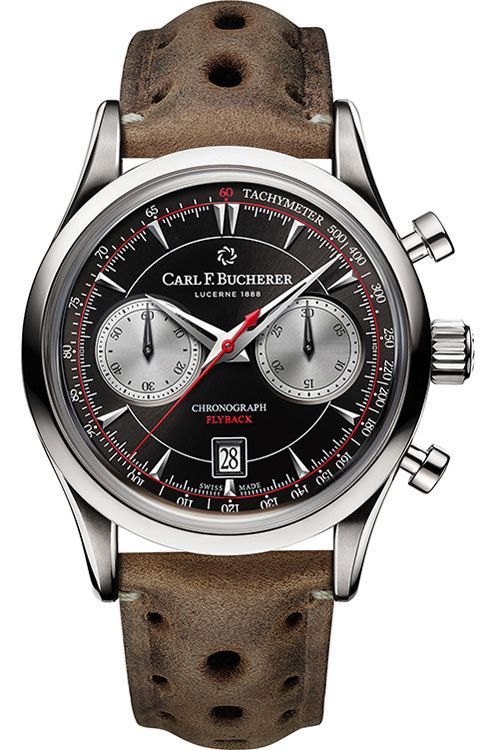
Rattrapante: Split-Second Chronographs
The split-second chronograph, also known as a rattrapante chronograph, is a fascinating and complex type.
It features two chronograph hands that work together, with one hand on top of the other.
The split-second hand can be stopped independently to record intermediate times, while the main chronograph hand continues to run.
This makes rattrapante chronographs very useful for timing events that start simultaneously but end at different moments, like a multi-lap race.
The Breitling Navitimer B03 Chronograph Rattrapante is an excellent example of this type of chronograph.
It gets its name from the French word “rattraper,” which means “to catch up.”
The rattrapante function is particularly valuable for pilots and fits perfectly with the Navitimer’s iconic purpose.
The watch has a unique and striking appearance. It has a stainless steel case, a stratos grey dial, and contrasting black sub-dials.
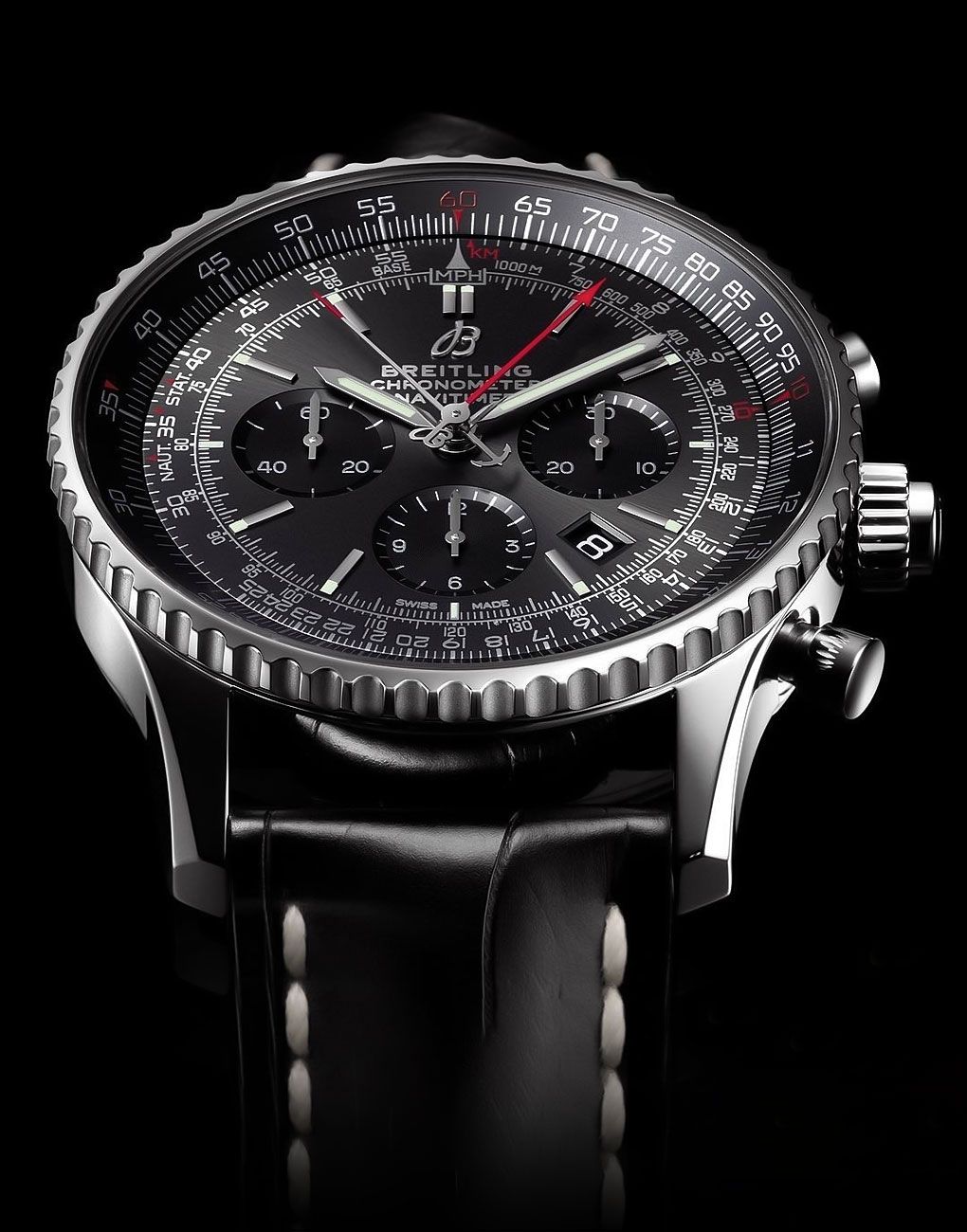
Type of Chronograph Movements: Integrated vs Modular Chronographs
Integrated Chronographs
An integrated chronograph is a unique type of watch in which the chronograph mechanism is fully integrated into the watch’s movement.
This means that the chronograph function is integral to the watch’s manufacturing process, resulting in precise and reliable timekeeping.
The Zenith Chronomaster Sport is a perfect example of an integrated chronograph.
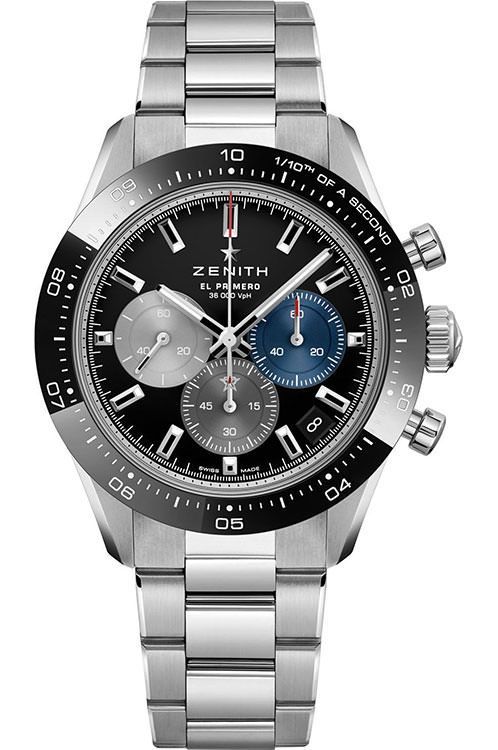
It pays tribute to previous models with its tri-color dial, pump-style pushers, and steel bracelet while also adding a modern touch with a black ceramic bezel and a 41mm case.
The watch features a black dial and an integrated steel bracelet, creating a sleek and contemporary look.
Powered by the El Primero 3600 movement, this timepiece offers accurate timing with its 1/10th-of-a-second automatic integrated chronograph function.
Modular Chronographs
The modular chronograph differs from the integrated type because it includes a separate module attached to the base movement to create the chronograph function.
This modularity simplifies manufacturing and maintenance processes, as the chronograph module can be replaced or repaired individually if necessary.
Furthermore, modular chronographs offer customization options because different modules can be combined to create unique chronograph functionalities.
Bell & Ross’s BR V2-94 Black Steel is an impressive and stylish timepiece that showcases a modular chronograph movement.

It is powered by the BR-CAL.301, an automatic mechanical movement that is Bell & Ross’s version of the reliable ETA 2894-2.
In addition to displaying hours, minutes, and a small seconds counter at three o’clock, it also features a useful date function and a precise chronograph with a 30-minute timer at nine o’clock and central chronograph seconds.
This movement has a power reserve of 42 hours.
Types of Chronograph Mechanisms: Cam-Actuated vs Column-Wheel Chronographs
Cam-Actuated Chronographs
Cam-actuated chronographs utilize a cam mechanism to control the chronograph’s functions, such as starting, stopping, and resetting.
This design has several advantages.
It is simpler, resulting in a more affordable timepiece and durable, contributing to the watch’s longevity.
As a result, cam-actuated chronographs are widely available and suitable for everyday use. However, there are some drawbacks.
The operation of a cam-actuated chronograph may not be as smooth and refined as that of a column-wheel chronograph.
Additionally, some watch enthusiasts may find the cam mechanism less aesthetically appealing than the intricate design of a column wheel.
These chronographs are often considered less prestigious due to their simpler design and lower cost.
Nevertheless, their affordability and durability make them an excellent choice for a reliable everyday watch.
One notable example of a cam-actuated chronograph is the Omega Speedmaster Moonwatch.
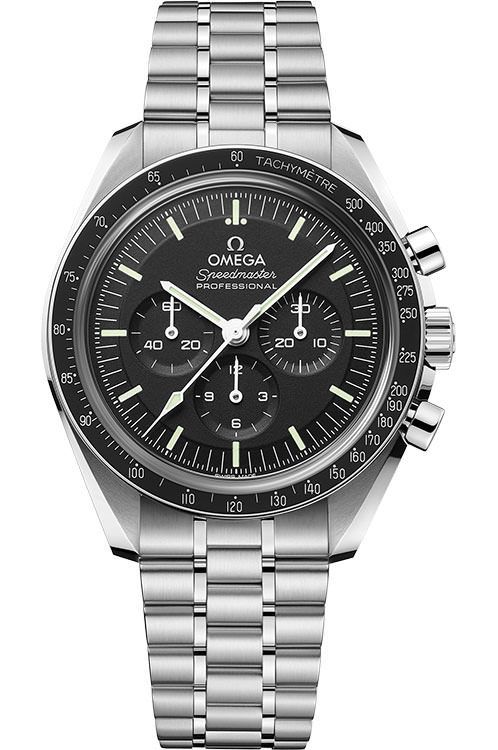
This iconic timepiece is renowned for its association with NASA’s lunar landings.
This watch exudes adventure. It has a 42-mm stainless steel case, sapphire crystal on both the front and caseback, an asymmetrical case, and a black step dial featuring an applied Omega logo.
Inspired by the fourth-generation Speedmaster worn on the moon, it also includes the distinctive dot over 90 on the anodized aluminum bezel.
Equipped with the Omega Co-Axial Master Chronometer Calibre 3861 movement, this watch boasts a small seconds sub-dial, a 30-minute recorder, a 12-hour recorder, and a central chronograph function.
Column-Wheel Chronographs
Known for their precise functionality and sophistication, column-wheel chronographs are highly regarded in the watch industry.
These chronographs utilize a wheel with columns to control functions such as starting, stopping, and resetting the chronograph.
The intricate design of this mechanism ensures smooth operation and adds a touch of refinement when engaging the pushers.
Watch enthusiasts especially appreciate the column-wheel mechanism’s visual appeal.
It is often showcased through a caseback window to showcase the watchmaker’s skill and intricate beauty. However, it’s important to note some drawbacks of this mechanism.
The column-wheel design is more complex to manufacture, resulting in a higher price range.
Additionally, servicing a column-wheel chronograph can be more challenging due to its intricate nature.
While this mechanism offers smooth operation, it may require more care and maintenance to ensure consistent performance.
As a result, column-wheel chronographs are often better suited for collectors or individuals seeking a wearable work of art rather than a utilitarian timepiece for everyday use.
Nevertheless, there are exceptions to this rule, such as the TAG Heuer’ Monaco X Gulf’ timepiece.
Despite its complex column wheel construction, this watch is affordable and easy to maintain.
At its core lies the Heuer 02 calibre movement, an automatic and self-winding chronograph built around a column wheel mechanism.
This column wheel guarantees smooth and precise control over all chronograph operations, including start, stop, and reset.
Operating at a frequency of 28,800 vibrations per hour (vph), the Heuer 02 movement offers an impressive power reserve of approximately 80 hours.
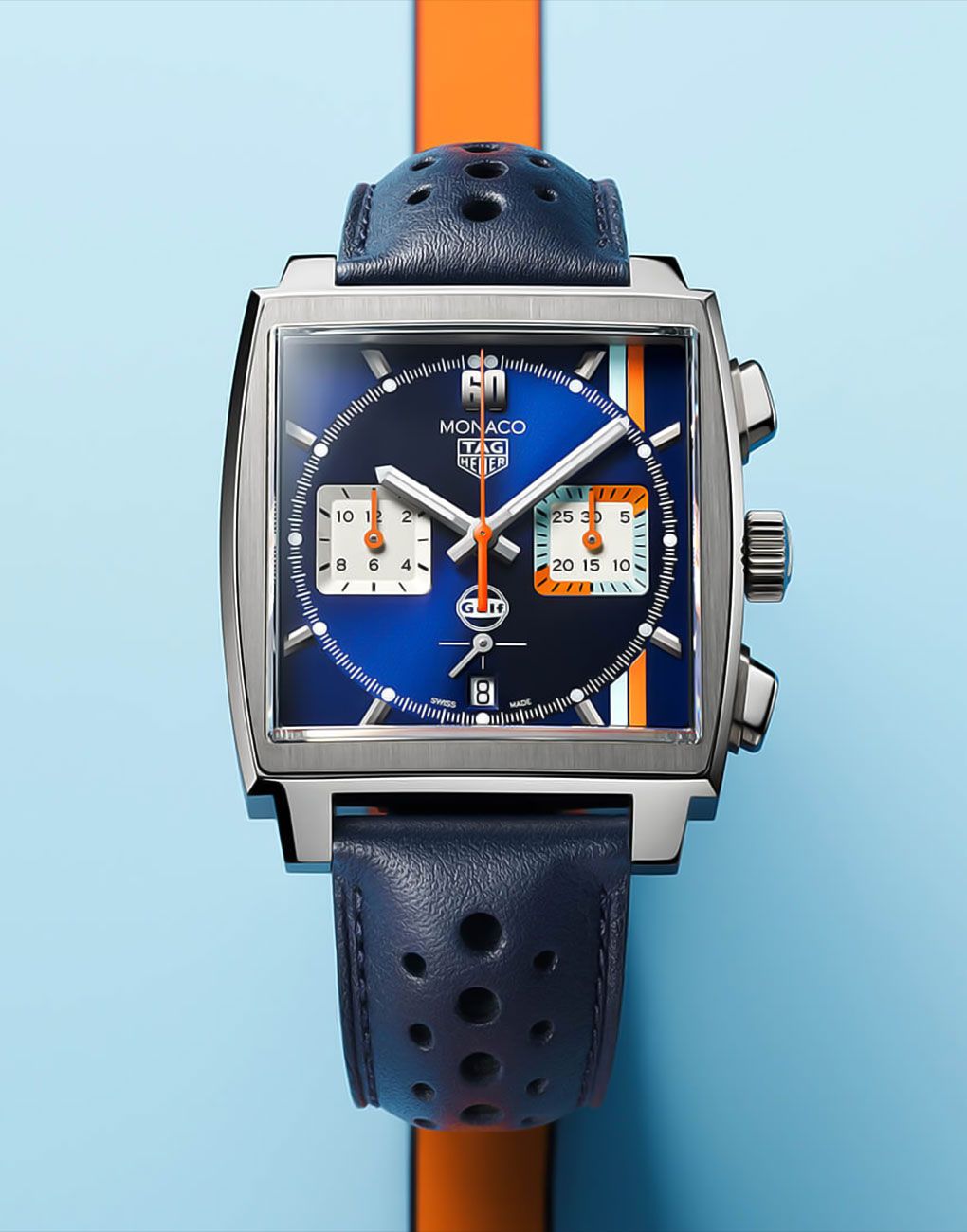
After diving into the world of chronographs, we hope you’ve learned something new and developed a greater appreciation for these interesting timepieces.
Whether you prefer the simplicity of a monopusher, the technical skill of a rattrapante, or the timeless appeal of a traditional configuration, a chronograph is perfect for your style and needs.
